The New Age of the United States of Science
Scientists, engineers, educators, policymakers, and the public must work together to ensure the United States remains globally competitive.
Published September 23, 2024
By Nick Fetty
Digital Content Manager
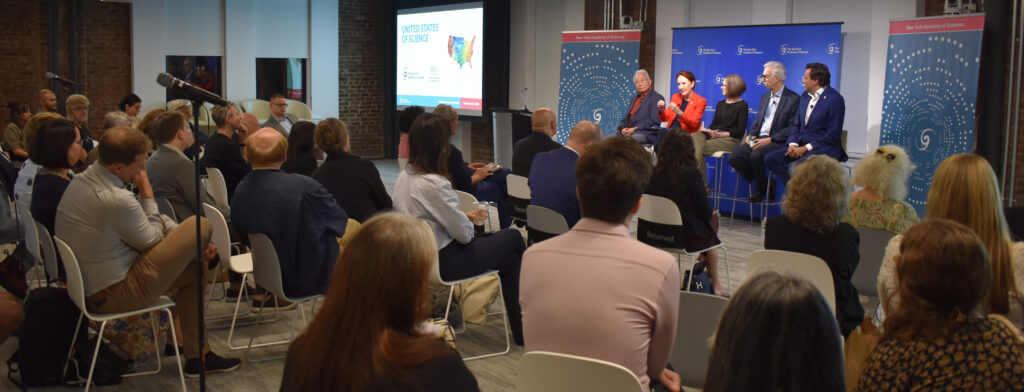
A panel of experts took a deep dive into science education, policy, economics, and more during the United States of Science event, hosted by The New York Academy of Sciences (the Academy) and the Science & Technology Action Committee (STAC) on September 16, 2024.
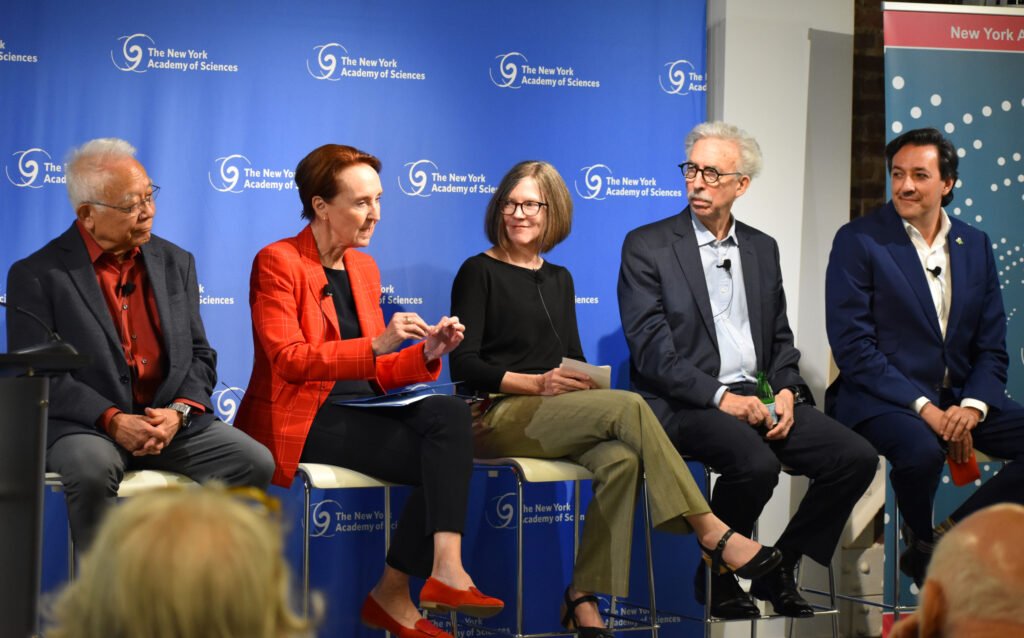
Moderator Jo Craven McGinty, science bureau chief for The Wall Street Journal, introduced the discussion by citing STAC’s State of Science Report in which more than 75 percent of respondents indicated that the United States is losing, or has lost, the competition to lead the world in science and technology. Furthermore, 60 percent predicted that in six years, China will be the leader.
She posed the question to Keith Yamamoto, PhD, vice chancellor for Science Policy and Strategy at the University of California San Francisco and co-chair of STAC if these perceptions reflect reality.
“The results reflect the fact that there’s been an erosion of trust in science. A lack of understanding of the societal impact of science,” said Dr. Yamamoto, calling it “disappointing.”
Darío Gil, PhD, IBM Senior Vice President and Director of Research, added that in terms of “absolute dollars spent,” the United States continues to lead the way. While the U.S. leads in funding, Dr. Gil did acknowledge that for the first time, the U.S. has been surpassed by China for the number of PhDs awarded, patents issued, and papers published.
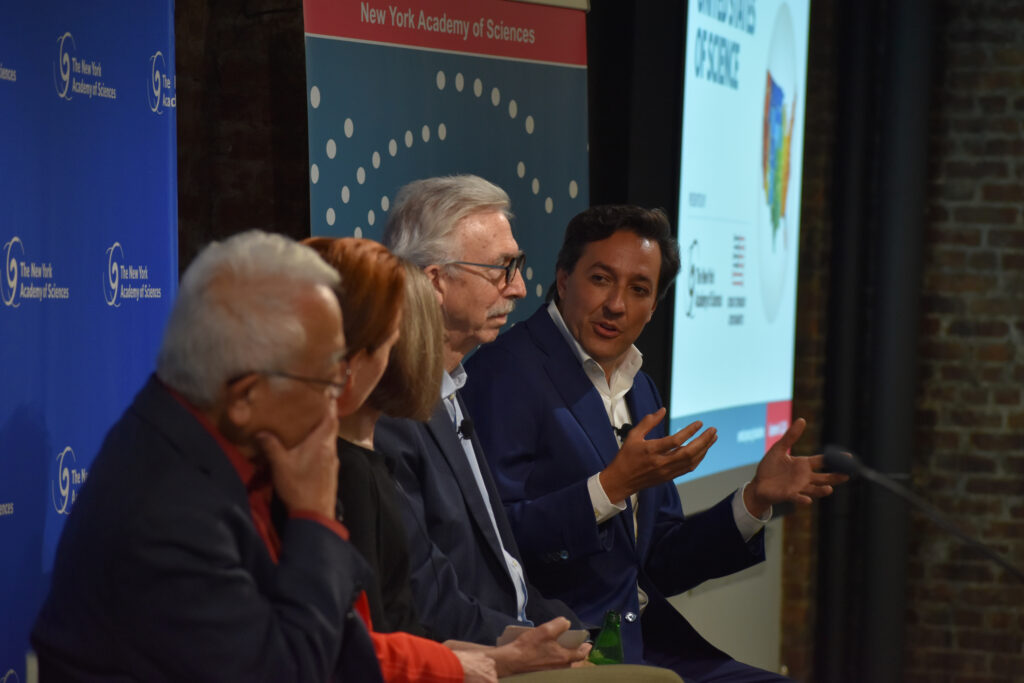
Areas of Strength, Room for Growth
“We have extraordinary strengths across the science and engineering enterprise, but we have areas of significant concern as well,” said Dr. Gil, who also serves on the Academy’s Board of Governors and the Executive Board for the International Science Reserve.
Craven McGinty, then shifted the focus to the potential cause of this perceived diminishment of science in the U.S. She asked Mary Woolley, president of Research!America and co-chair of STAC, whether it’s complacency on the part of Americans, or if the nature of competition has changed. Woolley stated that it’s a combination of the two.
“We’re taking science and technology for granted, and progress for granted, and we have for many years,” said Woolley. She added that while government officials are cutting budgets each year with little foresight to the future, private industry is leading the way.
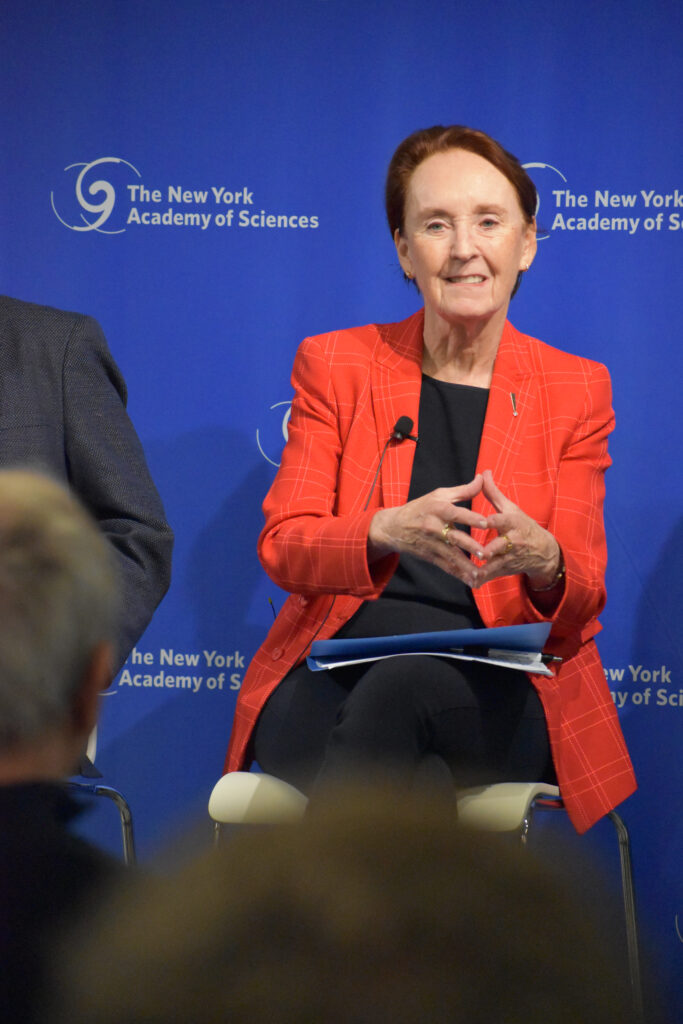
Dr. Gil said it’s important to understand the historical context to better comprehend how the nature of the competition has changed in recent years. He cited that 20 years ago the United States spent $300 billion annually in research and development. One-third came from the federal government, while the remainder came from the business sector. Fast forward 20 years, that number rises to $800 billion annually with $600 billion from the business sector.
Another contributing factor, according to Dr. Gil, is that the international scene has become more competitive as other countries have effectively imitated the success of U.S. institution building. He said China is perhaps the greatest example of this success.
The Role of Higher Education in Research
Nicholas Dirks, president and CEO of the Academy, offered an education perspective. Prior to his role at the Academy, Dirks spent his career in higher education, first on faculty and later in administration. He said that historically, higher education has been reliant on the model set up by 20th century governmental investments in science.
This includes research funded by agencies like the National Institutes of Health (NIH) and the National Science Foundation (NSF). This funding framework was made possible because of the “efflorescence of great research universities,” according to Dirks, that occurred in the U.S. in the early 20th century, particularly after World War II.
“I worry that if you both look at basic research, but even applied research that’s done within the context of a university where the incentives are not necessarily short-term incentives around building usable products or medicines, you begin to lose the real dynamism that underlies the whole system of research in this country,” Dirks cautioned.
The Importance of Fundamental Research
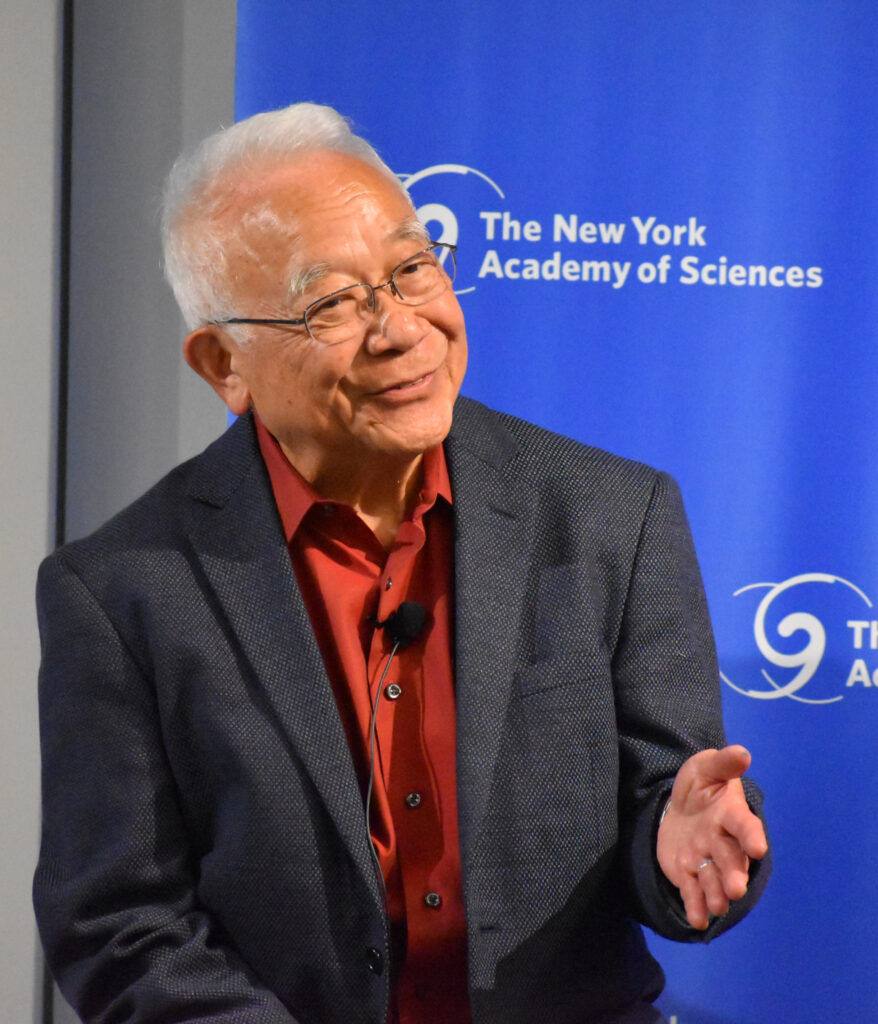
Electrical engineer Vannevar Bush was the nation’s first presidential science advisor, serving in the Franklin D. Roosevelt administration. When World War II ended, the president asked Bush about the role the federal government should continue to play in supporting science. In his report, Science —The Endless Frontier, Bush stated that the federal government should continue to support scientific advancement.
“[According to the report], the way that [the federal government] should stay involved is to support fundamental research, basic research, in universities and medical schools. And to support the training of the next generation of scientists,” said Dr. Yamamoto. “Which is really still the framework for federal science policy in this country.”
This fundamental research is crucial to support, according to Dr. Yamamoto, because through further investigation, scientists can discover practical applications for something that started as novel research. While this is important in theory, Dr. Yamamoto was critical that a commitment to this practice from the federal government has not been thoroughly maintained.
“The peak in federal research for science and technology in this country was reached in 1964, and it’s been sort of dribbling down ever since, from 1.9 percent to under 0.7 percent of GDP,” stated Dr. Yamamoto. He added that scientific research is “now a multisector enterprise that, in order to succeed, is going to need support across the board.”
The United States as a World Leader
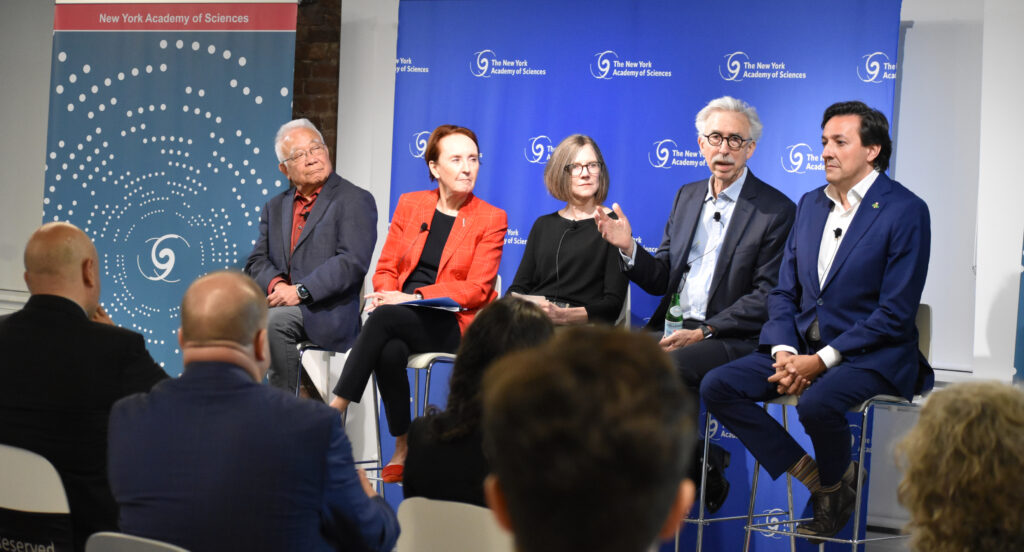
Building off Dr. Yamamoto’s GDP statistics, moderator Craven McGinty went deeper into the data. She cited that microchip production in the U.S., has declined from 37 percent 30 years ago, to 12 percent today. In particular, demand “has grown exponentially in the last decade.” Furthermore, the 2023 International Student Assessment, which evaluates the academic performance of 15-year-old students, ranked the U.S. 28th out of 37 participating countries in math, 12th in science, and 6th in reading. She then asked the panelists how we got to this point.
Dr. Gil explained the complexities of this issue from an economic standpoint. He indicated that recent changes in globalization and supply chains are part of the reason the U.S. lost its status as a major manufacturer of microchips. Dirks then weighed in. While his professional career has been in higher education, he acknowledges that the issue must be addressed at the K-12 level for American students.
“We are not producing enough K through 12 students with requisite STEM skills to work at the highest level of what we’re going to need for the workforce of the future,” Dirks said. He expressed concern about neglecting STEM skill development in American K-12 schools and overly relying on international students to pursue STEM degrees from American universities.
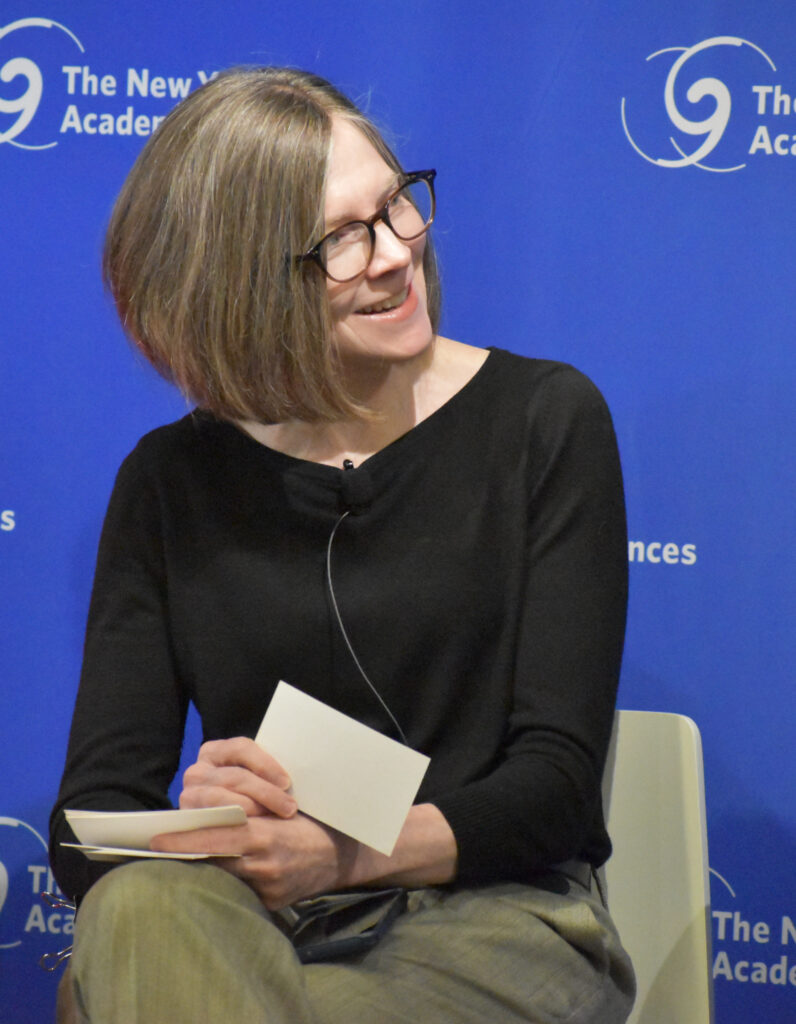
Taking Action
Woolley emphasized the pervasiveness of these issues. She said it isn’t just scientists and industry leaders who have expressed concern about the strength of the STEM pipeline. It’s also the broader public, such as parents.
She cited data from STAC, which found that people generally gave low rankings when assessing the quality of education in their state. However, when asked about areas that they value most in their state, education ranks high. With K-12 education in the U.S. being largely unfederated, she suggests that action at the local policy level can be the catalyst to make these necessary changes.
“There’s plenty of room for not only improvement but figuring out what each individual already in the science community, or associated with it, universities for example, what can you do?” Wooley asked. “Can you personally encourage a science-trained friend to run for the local school board? Think of the difference that would make.”
Academy members can access an on-demand video recording of the event. Click here to listen to or watch the full conversation.
Not a member? Sign up today.
